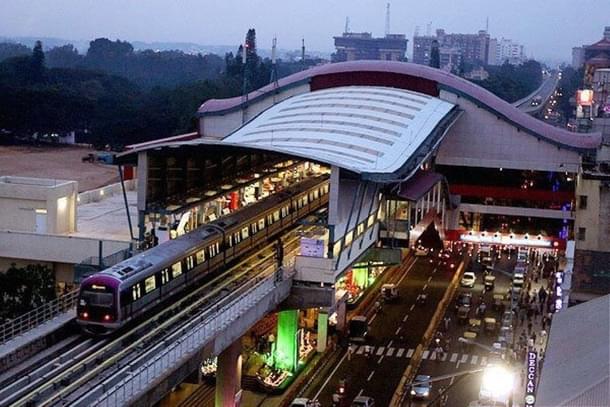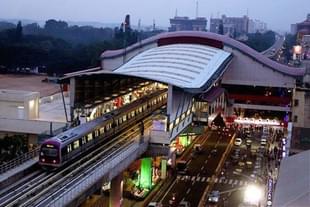Infrastructure
Bengaluru Metro Phase-3: BMRCL Adopts Three-Coach Trains For Magadi Road Corridor, To Move Forward With Approvals
Swarajya Staff
Nov 03, 2023, 11:22 AM | Updated 11:34 AM IST
Save & read from anywhere!
Bookmark stories for easy access on any device or the Swarajya app.


To secure Metro Phase-3 project approvals, the Bangalore Metro Rail Corporation Limited (BMRCL) has complied with directives of Ministry of Housing and Urban Affairs (MoHUA), to use three-coach trains, instead of the originally planned six-coach rolling stock, on the Magadi road metro corridor.
Currently, BMRCL operates six-car trains on both the Purple Line (Challaghatta-Whitefield) and Green Line (Silk Institute-Nagasandra), with a network length of 73 km.
In November 2022, the Karnataka government sanctioned two Metro Phase-3 corridors with a combined budget of Rs 16,328 crore.
Phase-3 of the metro project will span 44.65 km with two elevated corridors and a total of 31 metro stations.
The first corridor, extending over 32.15 km along the western side of the Outer Ring Road, connecting J P Nagar fourth phase to Kempapura, will include 22 stations and will also connect to the Airport Line.
The second corridor, covering a distance of 12.5 km from Hosahalli to Kadabgere on Magadi Road, will feature nine stations.
BMRCL managing director Anjum Parwez said, "The stations along the Magadi Road will be designed to accommodate six-car trains, but we will initially run three-coach trains. However, the capacity can be increased to six-coach trains, once demand rises. In phase 1, we also started with three coaches and later increased to six-coach trains.", as reported by Money Control.
The Magadi Road section will have nine stations — Hosahalli, KHB Colony, Kamakshipalya, Sumanahalli Cross, Sunkadakatte, Herohalli, Byadarahalli, Kamath Layout, and Kadabagere, with an expected daily ridership of 1.7 lakh by 2028.
Providing assurance that this decision would not impact passengers, Parwez said, "Currently, Bengaluru Metro uses the DTG (distance-to-go) signalling system, which maintains a train headway of two-and-a-half minutes. However, an advanced Communication-Based Train Control (CBTC) signalling system can reduce the train headway to less than 90 seconds."
By reducing the number of coaches for the Magadi Metro corridor, the initial expenditure will be reduced to Rs 15,600 crore.
Furthermore, as part of additional conditions, MoHUA has requested BMRCL to incorporate a front evacuation system for trains running in Phase-3 corridors to facilitate passenger exits during emergencies.
Currently, the Bengaluru Metro employs a side-evacuation system where passengers exit through normal doors. In a front evacuation arrangement, emergency doors are located at the front and rear ends of Metro trains.
Metro operators can choose between side and front evacuation methods based on their specific circumstances and preferences, but MoHUA plans to establish a standardised system nationwide.





